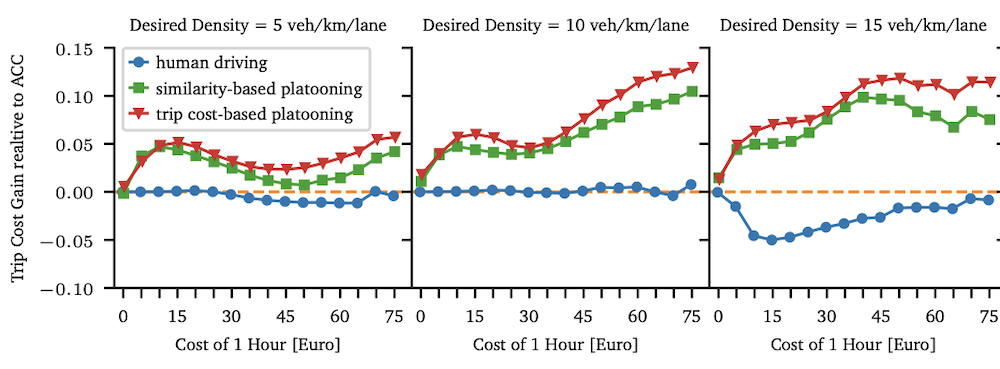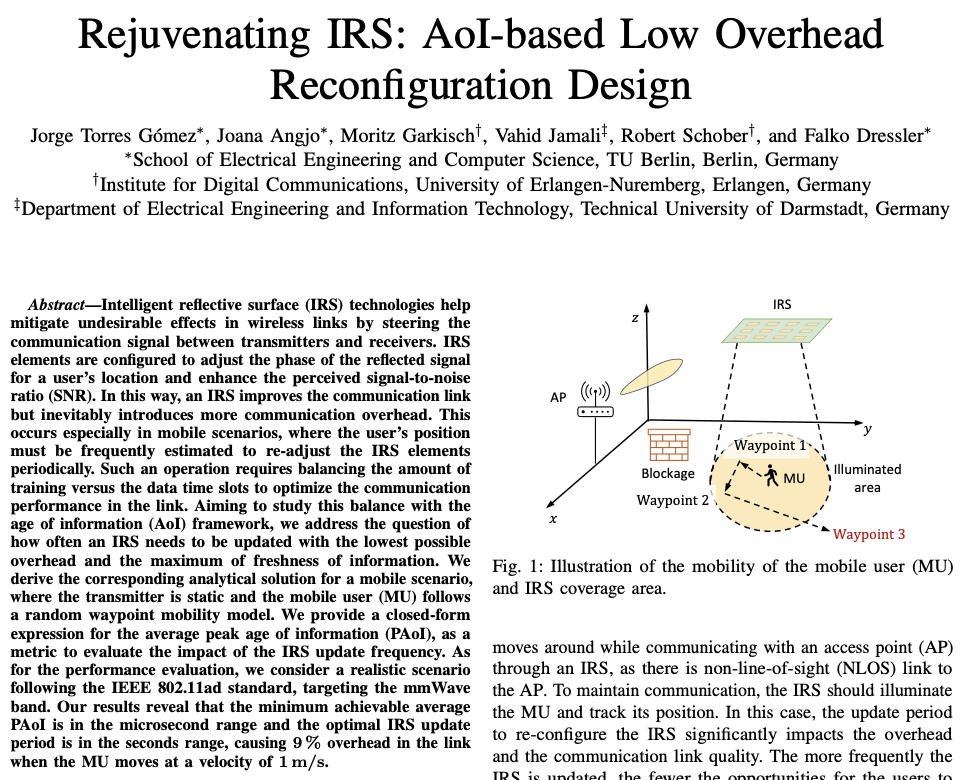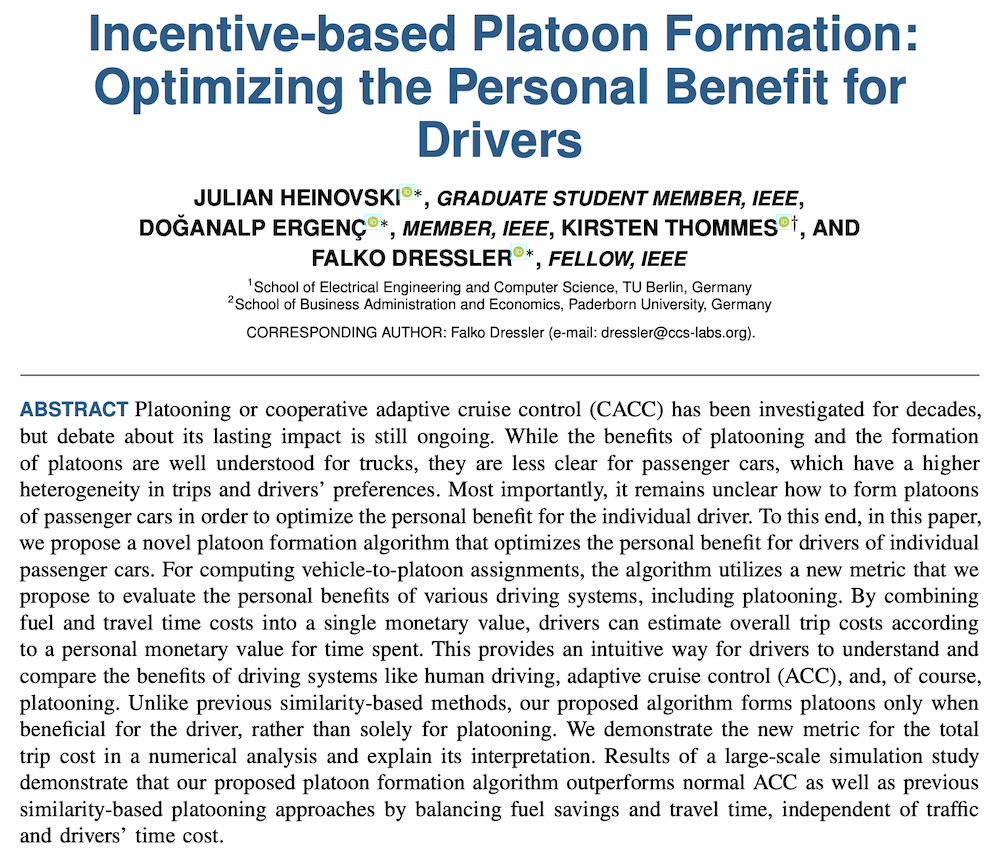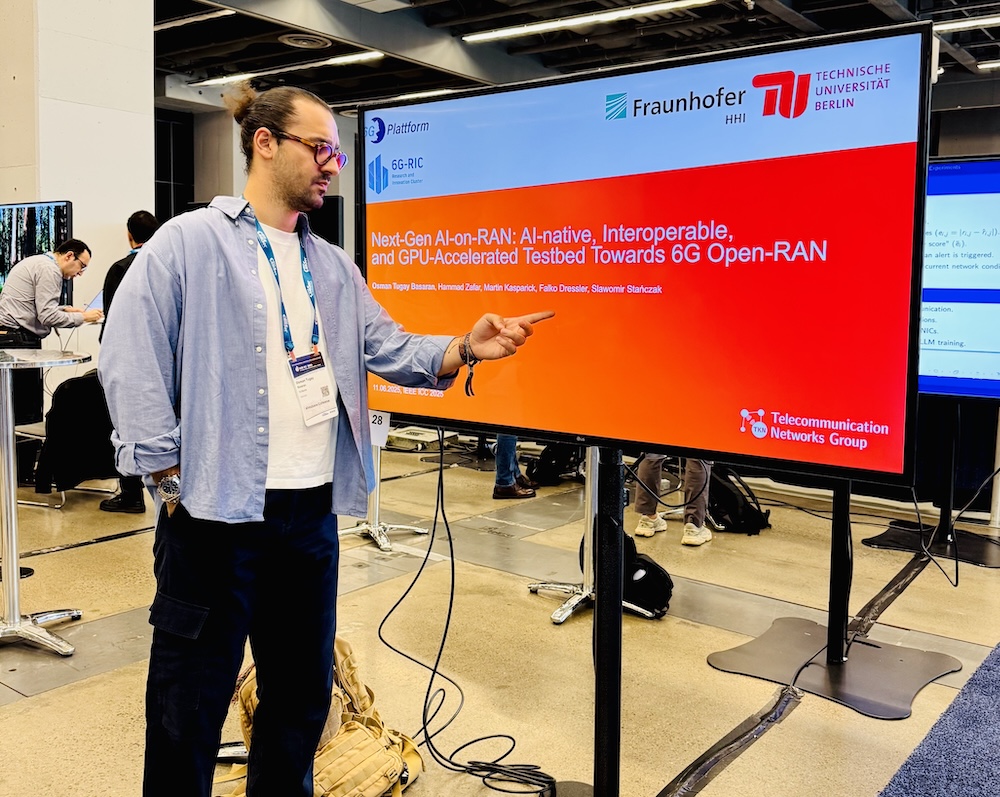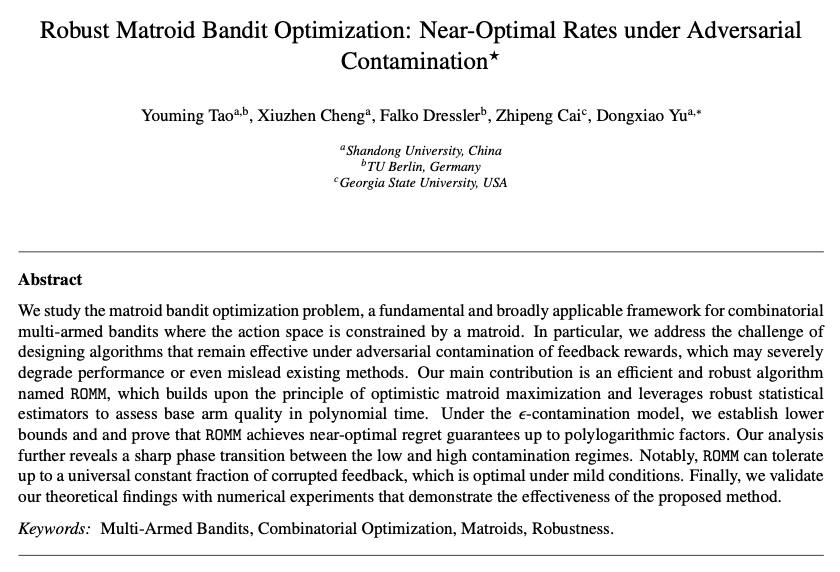Literature Database Entry
dressler2019dynamic
Falko Dressler, Florian Klingler and Gianluca A. Rizzo, "Dynamic Mobile Base Stations in 5G Networks – The Moving Network Paradigm," in The 5G Italy Book 2019: a Multiperspective View of 5G, Marco Ajmone Marsan, Nicola Blefari Melazzi, Stefano Buzzi and Sergio Palazzo (Eds.), Consorzio Nazionale Interuniversitario per le Telecomunicazioni (CNIT), 2019, pp. 477–492.
Abstract
The evolution of current wireless access networks towards 5G and beyond is characterized, among others, by the provisioning of high-bandwidth services and by the capability of serving traffic of a large number of heterogeneous devices. Among the key approaches for provisioning high capacity in such networks, a prominent role is played by network densification. However, dense deployments of many small cell base stations imply huge investments, increasing both CAPEX and OPEX for the mobile network. Additionally, densification increases the amount of over- provisioned network resources, due to variability in traffic demand over space and time. One of the most promising approaches to address these issues is the moving network paradigm, which exploits vehicle-mounted small cell moving base stations. This allows taking advantage of the correlation between spatio-temporal patterns of users and of vehicles, in order to create a network that flexibly and naturally densifies whenever and wherever needed by “following” users, hence reducing the need for dense deployments of static base stations. In this chapter, we review the main motivations and drivers for integrating moving base stations into future cellular access networks, and we outline the overall network architecture resulting from such integration. Furthermore, we characterize some of the main open research issues which stand in the way of the practical feasibility of the moving network paradigm. Among these are questions such as how to efficiently manage network resources in a dynamic fashion, accounting for the dynamics of service demand as well as of the moving network infrastructure; how to mitigate interference effects; how to imple- ment mechanisms for reliable wireless mobile backhaul, for the interconnection of moving base stations to the core of the network; and how to efficiently provision Multi-access Edge Computing (MEC) services in the moving network paradigm.
Quick access
Authors' Version ![]() (PDF on this web site)
(PDF on this web site)
BibTeX ![]()
Contact
Falko Dressler
Florian Klingler
Gianluca A. Rizzo
BibTeX reference
@incollection{dressler2019dynamic,
author = {Dressler, Falko and Klingler, Florian and Rizzo, Gianluca A.},
title = {{Dynamic Mobile Base Stations in 5G Networks -- The Moving Network Paradigm}},
pages = {477--492},
booktitle = {The 5G Italy Book 2019: a Multiperspective View of 5G},
editor = {Ajmone Marsan, Marco and Blefari Melazzi, Nicola and Buzzi, Stefano and Palazzo, Sergio},
publisher = {Consorzio Nazionale Interuniversitario per le Telecomunicazioni (CNIT)},
year = {2019},
}
Copyright notice
Links to final or draft versions of papers are presented here to ensure timely dissemination of scholarly and technical work. Copyright and all rights therein are retained by authors or by other copyright holders. All persons copying this information are expected to adhere to the terms and constraints invoked by each author's copyright. In most cases, these works may not be reposted or distributed for commercial purposes without the explicit permission of the copyright holder.
The following applies to all papers listed above that have IEEE copyrights: Personal use of this material is permitted. However, permission to reprint/republish this material for advertising or promotional purposes or for creating new collective works for resale or redistribution to servers or lists, or to reuse any copyrighted component of this work in other works must be obtained from the IEEE.
The following applies to all papers listed above that are in submission to IEEE conference/workshop proceedings or journals: This work has been submitted to the IEEE for possible publication. Copyright may be transferred without notice, after which this version may no longer be accessible.
The following applies to all papers listed above that have ACM copyrights: ACM COPYRIGHT NOTICE. Permission to make digital or hard copies of part or all of this work for personal or classroom use is granted without fee provided that copies are not made or distributed for profit or commercial advantage and that copies bear this notice and the full citation on the first page. Copyrights for components of this work owned by others than ACM must be honored. Abstracting with credit is permitted. To copy otherwise, to republish, to post on servers, or to redistribute to lists, requires prior specific permission and/or a fee. Request permissions from Publications Dept., ACM, Inc., fax +1 (212) 869-0481, or permissions@acm.org.
The following applies to all SpringerLink papers listed above that have Springer Science+Business Media copyrights: The original publication is available at www.springerlink.com.
This page was automatically generated using BibDB and bib2web.

